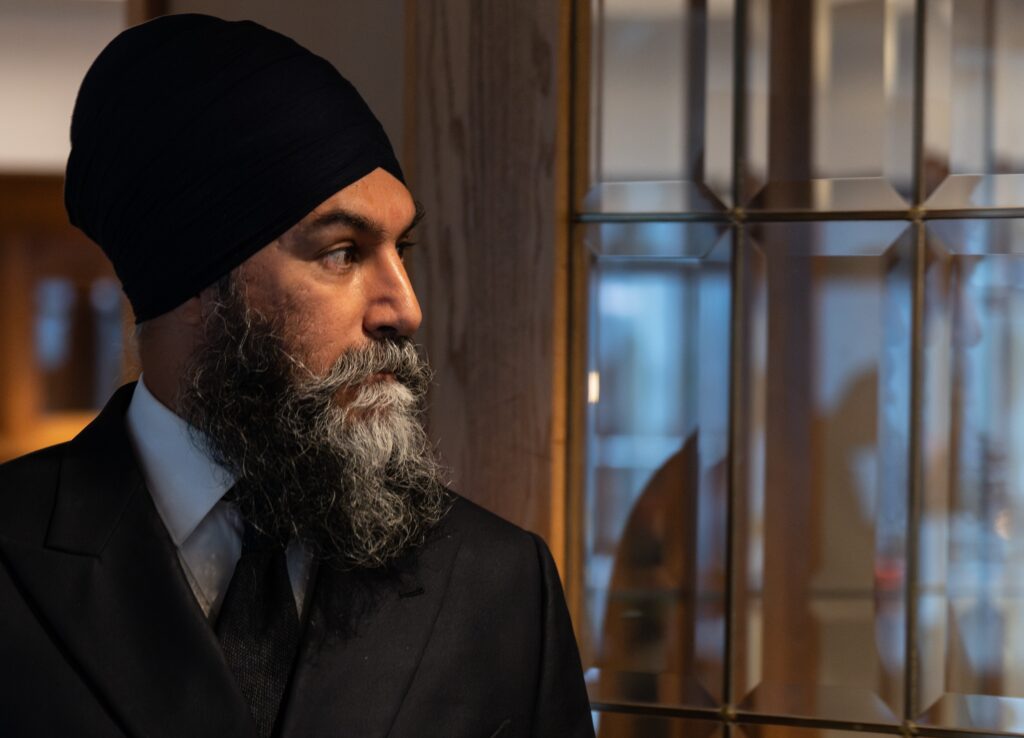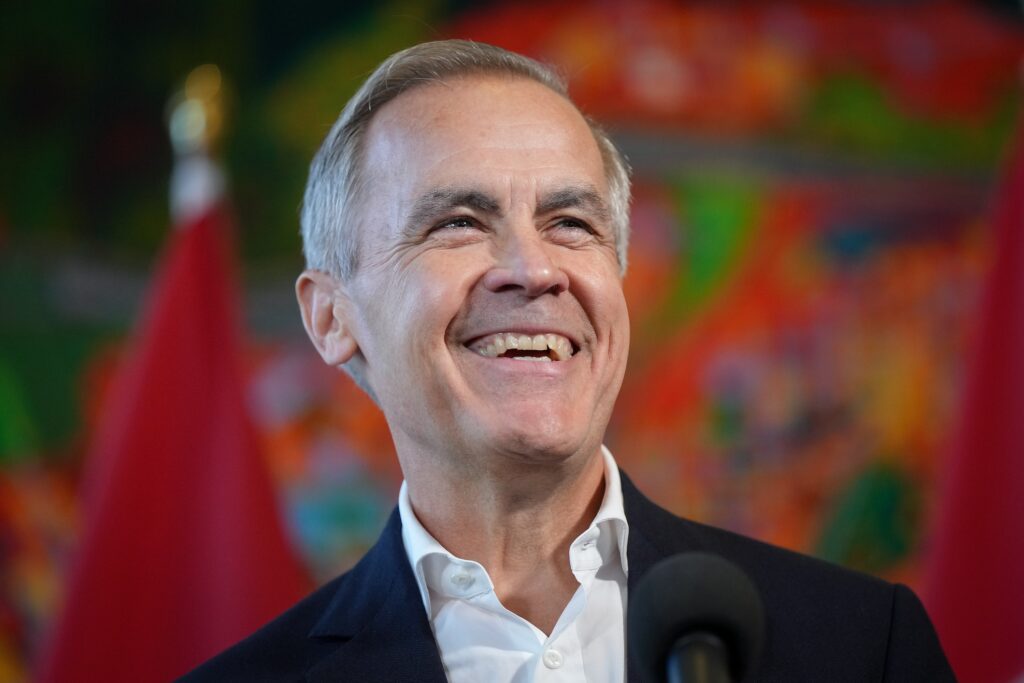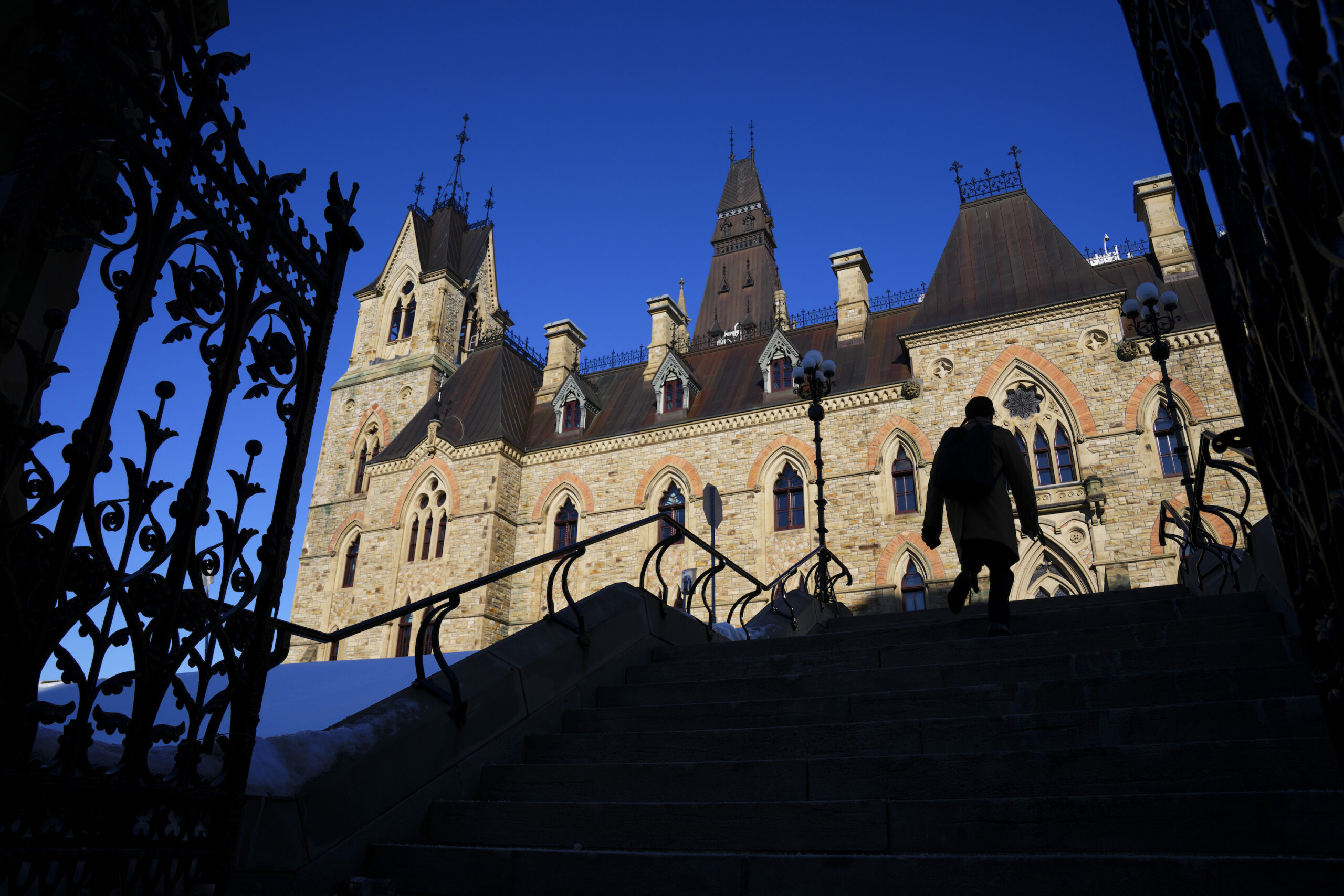The House of Commons returns today, September 16th, and is certain to begin how it ended in June, in an environment of toxic partisanship, prompted by the approaching federal election next fall which is expected on or before October 20, 2025:
- Cabinet recently held its retreat in Halifax, and the Liberal, Conservative and NDP caucuses met last week in advance of Parliament’s return.
- Also today, two high-stakes byelections take place in the suburban Winnipeg riding of Elmwood-Transcona and the Montreal-area seat of Lasalle-Émard-Verdun.
Developments over the summer
- On September 4, NDP leader Jagmeet Singh ended the Supply and Confidence Agreement (SACA) between his party and the Liberals, which has run since March of 2022.
- The federal government ended a strike by the country’s two large railways by requesting binding arbitration, which was granted by the Canada Industrial Relations Board.
- Federal ministers announced measures to reduce the number of temporary foreign workers and international students entering Canada, and to disallow applications for work permits while in the country.
- The Bank of Canada lowered interest rates twice during the summer, but its growth forecasts remain modest, and the unemployment rate is rising, particularly among young people and recent immigrants.
The most recent public opinion polls show the Conservatives continue to lead the Liberals by an average of 19-percentage points, 43% to 24%.
The national economy
On July 24, the Bank of Canada (BoC) lowered its key interest rate to 4.50 per cent, marking the bank’s second rate cut since March 2020. After inflation eased to 2.5% for the month of July – the lowest since March 2021 – the BoC reduced the rate again to 4.25 per cent on September 4.
Statscan recently reported that “On a per capita basis, GDP fell 0.1% in the second quarter – the fifth consecutive quarterly decline.” The BoC noted that household spending, which includes both consumer purchases and housing, continues to be weak.
According to the Statscan numbers, Canada lost 2,800 jobs in July as population growth continues to outpace job creation. In August, job growth remained modest while the unemployment rate ticked up to 6.6% after rising in the two previous months.
Policy developments over the summer
National Rail Strike
The August strike/lockout at the two main railway companies in the country, Canadian National Railway (CN) and Canadian Pacific Kansas City (CPKC), threatened the transport of over $1 billion worth of moved cargo every day.
Federal Labour Minister Steven MacKinnon requested the Canada Industrial Relations Board (CIRB) to impose binding arbitration in the labour dispute. While the CIRB granted the request, the Teamsters Union is appealing the ruling at the Federal Court.
More restrictions on Temporary Foreign Workers, International Students and Visas
Over the summer the federal government continued to tighten the immigration rules to reduce the number of some temporary foreign workers and international students admitted into Canada in areas of high unemployment.
Employment Minister Randy Boissonnault also announced that that visitors to Canada can no longer apply for work permits while in the country:
- As a result, the Globe and Mail recently reported that that between 70,000 and 130,000 international students holding postgraduation work permits (PGWPs) might be forced to return to their home countries in the next year.
- By the end of 2023, there were 396,235 PGWP holders across the country, almost triple the number from 2018.
Canada is also refusing entry to more foreigners by providing fewer visas:
- In July, Canada refused entry to 5,853 foreign travellers, who were “allowed to leave,” as Canada puts it, and who include students, workers and tourists, the most rejections since January 2019.
Terror suspects investigation
During the summer, MPs on the House of Commons’ Public Safety Committee began a study into the failed plot by two Islamic State suspects to carry out a terror attack in Toronto.
The hearings are focused on how one of the suspects obtained citizenship even though he had allegedly committed aggravated assault in a foreign country in 2015.
The NDP ends the Supply and Confidence Agreement (SACA)
In a move that was carefully planned over the summer, on September 4, NDP leader Jagmeet Singh announced on social media that he had “ripped up” SACA, the agreement by which the NDP had supported the minority Liberals on key votes in the House since March 2022.
The agreement had produced some major results including: the Liberals’ adoption of the national dental care plan, rental supplements for low-income tenants, a temporary doubling of the GST rebate, 10 days sick leave for federal-regulated workers, the housing accelerator, “anti-scab” legislation, the first steps towards national pharmacare, and the school lunch program.

But as time went on, as the Prime Minister’s popularity tumbled, Mr. Singh and the NDP faced calls from within the party to distance themselves from a government well beyond its “best before” date, and Conservative leader Pierre Poilievre recently called on Singh to stop propping up the Liberals.
What the end of SACA means
As Jagmeet Singh indicated in his press conference, the end of SACA likely increases the possibility of an election earlier than October 2025. The resulting uncertainty likely strengthens Trudeau’s hand if he encounters additional Liberal calls to give way to a different leader. In practical terms, the end of SACA means all parties will revert to the normal “issue by issue” approach to major legislation, economic updates, budgets, opposition day motions and confidence votes that Canadians saw during the 2019-2021 government:
- House Leaders will become key players in developing day-to-day offensive and defensive strategies and conducting negotiations among the parties.
- The Party Whips will need to ensure MPs are available for unexpected or snap votes; as a result, expect MPs’ travel to be curtailed, and ministerial announcements during House sittings to be less frequent.
Other than opposition day motions, the first possible opportunity for a confidence vote is the fall economic update (provided that a vote on a bill or motion is needed), which is usually presented by the finance minister in November:
The Liberals could choose to weaponize the statement by including economic measures, or duck that opportunity by sticking to reporting on the state of the economy: either way, the pressure will be on the NDP to bring the government down. The Bloc Quebecois has already indicated that it is interested in making deals with the Liberals.
How can the opposition bring the government down? Conservatives, New Democrats and the Bloc Québécois would need to vote no confidence in unison.
Liberal challenges mount
In the past two weeks, the Liberals have faced a series of setbacks:
- In his news conference after ending the SACA, Jagmeet Singh sought to position his party as the only hope for progressives to stop Pierre Poilievre and the Conservatives in the next election. This approach echoes Jack Layton’s 2011 Orange Wave strategy, which saw the NDP jump over the Liberals to become Official Opposition.
- Liberal Campaign Manager Jeremy Broadhurst resigned, after the Toronto Star reported he told the Prime Minister he wasn’t confident he could win the next election. Some ministers called Mr. Broadhurst’s resignation an opportunity for needed renewal.
- Five Chiefs of Staff to ministers have resigned, and according to the Globe and Mail, many Liberal MPs skipped the Nanaimo Caucus meeting. Additionally, Trudeau’s Quebec lieutenant, Pablo Rodriguez, is widely expected to resign shortly to pursue the leadership of the Quebec provincial Liberals.
- Long-time Montreal Liberal MP Alexandra Mendes said in Nanaimo that she was sceptical the party could win the next election with Justin Trudeau as leader: “I can’t be deaf to what my constituents are telling me.”
- NDP Leader Jagmeet Singh also signalled his party’s plan to oppose the consumer carbon tax, saying it puts the burden on working people.
Mark Carney to advise on economic growth
Prior to the Liberal caucus meeting in Nanaimo, the Prime Minister announced that Mark Carney, former Bank of Canada and Bank of England Governor, will head a Task Force on Economic Growth to “develop and shape ideas for the next phase on Canada’s strategy for near-and longer-term economic growth and productivity.” While Carney’s new role is with the Liberal Party, the Conservatives immediately pounced on the former banker’s current job as chair of Brookfield Asset Management and head of transition investing, calling on him to prevent his conflict of interest by resigning from his Brookfield role.

Two critical byelections today
Elmwood-Transcona
This suburban Winnipeg seat was vacated by the NDP’s Daniel Blaikie, who resigned to take a senior staff position with Manitoba Premier Wab Kinew.
Blaikie had been the riding’s MP since 2015, winning it by 63 votes and steadily increasing his lead and in 2021, he won the riding by 9,023 votes over the Conservatives. The NDP has won 10 out of the 11 elections held in Elmwood-Transcona and its predecessor riding, Winnipeg-Transcona, since the formation of this electoral district in 1988, eight of those 10 with a candidate with the Blaikie name. Daniel Blaikie’s father Bill held the seat for the NDP for 29 years between 1979 and 2008.
The Conservative candidate, Colin Reynolds, has been attempting to tie NDP candidate Leila Dance to her party’s support for the Liberals through the SACA. The Liberals, whose candidate is Ian MacIntyre, are not expected to be a major factor in determining the outcome. This is a head-to-head battle between the Conservatives and the NDP.
Lasalle-Emard-Verdun
The vacancy in Lasalle-Émard-Verdun was created by the resignation of David Lametti, former Liberal Minister of Justice, who had held the riding since 2015. In 2021, Lametti won the riding with 43% over the Bloc Quebecois (22%), the NDP (19%) and the Conservatives (7%).
Polls show a close three-way battle between the Liberals’ Laura Palestini, the Bloc Québécois’ Louis-Philippe Sauvé and the NDP’s Craig Sauvé.
While the Liberals have flooded the riding with cabinet ministers, they have been dogged by unpopularity throughout the campaign. In addition, roughly 50 pro-Palestine Liberal staffers have been sitting out the byelection over the government’s stance on the war in Gaza and its policies on the Israeli-Palestinian conflict.
A Liberal loss in a riding, long considered a stronghold, will increase pressure on the Prime Minister to reconsider his intention to remain as leader through to the next election. An additional interesting element to consider is both the Bloc and NDP candidates’ last names are Sauvé, leading to some confusion amongst voters.
Three provincial elections this fall
British Columbia
B.C. voters are scheduled to go to the polls on October 19. Due to recent political developments, the political landscape is in significant flux:
On August 28, B.C. United party leader Kevin Falcon, announced the party was suspending its election preparations and encouraged his party’s supporters “to unite behind John Rustad and the Conservative Party of B.C.” B.C. United is the former Liberal Party, and John Rustad is a former cabinet minister and Liberal MLA who Falcon dismissed from the party in 2022.
Since Falcon’s announcement, the two parties have been attempting to decide which B.C. United candidates will run for the Conservatives, and which will contest the election as independents. With the election call within 7-10 days, at least six former B.C. United candidates have said they will run as Independents, along with two former B.C. Conservatives and one former NDP MLA.
Meanwhile, NDP Premier David Eby will lead his government in his first election as leader. In the last election, in October 2020 under Eby’s predecessor, John Horgan, the NDP won a record 57 seats with the highest share of the popular vote in the party’s history. The poll aggregator 338Canada.com currently has the NDP and the Conservatives tied at 44%, with B.C. Greens at 11%.
New Brunswick
Progressive Conservative leader Blaine Higgs is about to seek his third mandate in an election expected to be held on October 21. Higgs is in tough against the Liberal Opposition, led by Susan Holt. 338Canada has the Liberals ahead by seven points at 42% over the Higgs Conservatives at 35%, with the Greens in third at 16%.
Saskatchewan
Scott Moe is also seeking his third mandate as Premier on (or before) October 28th, having been premier since 2018. The NDP has high hopes for its leader, Carla Beck and her team, but 338Canada has Moe and his Saskatchewan Party with a six-point lead, 48% to 42% over the NDP.
Legislation we’re watching
Bill C-64: An Act respecting Pharmacare
- At second reading in the Senate.
Bill C-27: An Act to enact the Consumer Privacy Protection Act, the Personal Information and Data Protection Tribunal Act and the Artificial Intelligence and Data Act and to make consequential and related amendments to other Acts.
- Committee Clause-by-Clause; May 29, 2024
Bill C-26: An Act respecting cyber security, amending the Telecommunications Act and making consequential amendments to other Acts.
- First reading in the Senate; June 19, 2024
Bill S-243: An Act to enact the Climate-Aligned Finance Act and to make related amendments to other Acts.
- At Committee stage; May 9, 2024
Bill C-63: The Online Harms Act
- At Second Reading in the House of Commons
The political scene
According to the 338Canada website, which averages all recent national polls, the Conservatives now have a 19-percentage point lead over the Liberals. As of September 15, the Conservatives were at 43 per cent, the Liberals at 24 per cent, the NDP at 16 per cent, the Bloc Quebecois at 8 per cent, the Greens at 4 per cent and the People’s Party of Canada at 3 per cent.
If the parties’ current standings carry through to the next election, it could produce 219 seats for the Conservatives, who currently have 118; with the Liberals could be reduced to 68 seats, down from 156; the NDP would have 14 seats, down from 25; and the Bloc would win 40 seats, up from 32.

